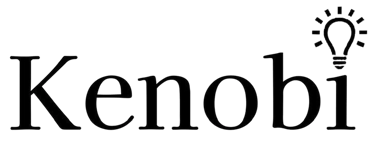The Complete Guide to Content Marketing by Kenobi Solutions
At Kenobi Solutions, we know that content is the beating heart of an effective digital strategy. In a saturated digital environment, relevant and well-targeted content doesn’t just capture attention – it transforms visitors into loyal customers.


At Kenobi Solutions, we know that content is the beating heart of an effective digital strategy. In a saturated digital environment, relevant and well-targeted content doesn’t just capture attention – it transforms visitors into loyal customers.
Through this guide, our team reveals the keys to understanding, structuring, and maximizing a content marketing strategy that propels your business forward.
1. What Is Content Marketing?
Content marketing is about creating and distributing high-value content aimed at a specific audience to generate engagement and conversions. It’s not just about “filling up a website,” but about building a true relationship of trust with your audience.
At Kenobi, we believe effective content is, above all, useful content. It can take the form of blog articles, videos, podcasts, social media posts, and more. The aim is to respond meaningfully to the needs and questions of your target audience.
2. Why Is Content Marketing Essential?
Well-designed content:
Strengthens your brand visibility
Showcases your expertise
Builds an engaged community
Improves customer loyalty
Generates an excellent return on investment
🔍 Did you know?
According to current data, long-form content that’s regularly updated is much more likely to appear on Google’s first page. And nearly 40% of consumers read multiple pieces of content before contacting a business. That’s why it’s crucial to be present, relevant, and consistent.
3. The Three Phases of an Effective Content Strategy
3.1 Gaining Visibility: Awareness
First step: capture attention. This means creating informative content to answer your audience’s questions at the start of their journey. The goal: to get known and attract qualified traffic.
3.2 Creating Engagement
At this stage, your audience is identifying their need. It’s the right time to offer content that highlights your products or services: practical guides, case studies, FAQs, etc.
3.3 Converting: The Transformation
Once trust is built, it’s time to convert. This is about clearly demonstrating your added value. More targeted content (buying guides, webinars, customer testimonials) can trigger the buying decision.
4. Building an Effective Content Strategy
4.1 Setting Clear Goals
It all starts here. Define precise, measurable goals tailored to your business. Use the SMART method to structure your approach effectively.
Example: publish two articles per week aiming for Google’s top 10 within three months, with a goal of at least 10 clicks per article.
4.2 Market Research and Competitive Analysis
Identify your clients’ real needs and gaps left by your competitors. This analysis helps you produce more relevant, distinctive content.
4.3 Define Your Personas
Knowing your audience is essential. At Kenobi Solutions, we build detailed personas to precisely target our messaging.
4.4 Create an Editorial Calendar
Plan your content in advance: topics, formats, keywords, visuals, deadlines. This ensures consistency, regularity, and saves time in the long run.
4.5 Define Your Editorial Line
Your tone, style, and image must all be coherent. Whether formal, casual, or humorous, your editorial line strengthens your brand identity.
5. Adapting Your Content to Each Channel
5.1 For SEO
Organic search is a powerful lever. Optimize your content (keywords, structure, originality), understand search intent, and never copy competitors. Be unique.
5.2 For Social Media
Choose platforms based on your audience: LinkedIn for B2B, Instagram for visuals, TikTok for younger audiences, etc. Test, analyze, adjust.
5.3 For Email Marketing
Create personalized, engaging, and non-intrusive newsletters. Vary formats and offers. Work on your subject lines, frequency, and calls to action. A/B testing is your best ally.
6. Measuring the Effectiveness of Your Strategy
6.1 Tools to Use
SEMrush for SEO analysis and keyword research
Google Analytics to understand user behavior
Majestic, Moz, SimilarWeb to measure your authority and backlinks
6.2 Key KPIs to Track
Engagement rate (shares, comments, likes)
Number of conversions
Time spent on pages
Bounce rate
Organic traffic
Retention rate (returning visitors)
Newsletter open rates
In Conclusion
Content marketing is a fundamental pillar of any successful digital strategy. It requires time, method, and a deep understanding of your audience.
At Kenobi Solutions, we support our clients in designing, producing, and optimizing their content for a lasting impact on their digital performance. If you’re ready to take action, our team is here to help you build a strategy that reflects who you are.
👉 Contact us today to kick-start your content strategy.
